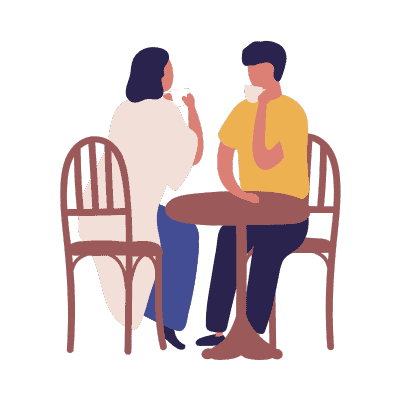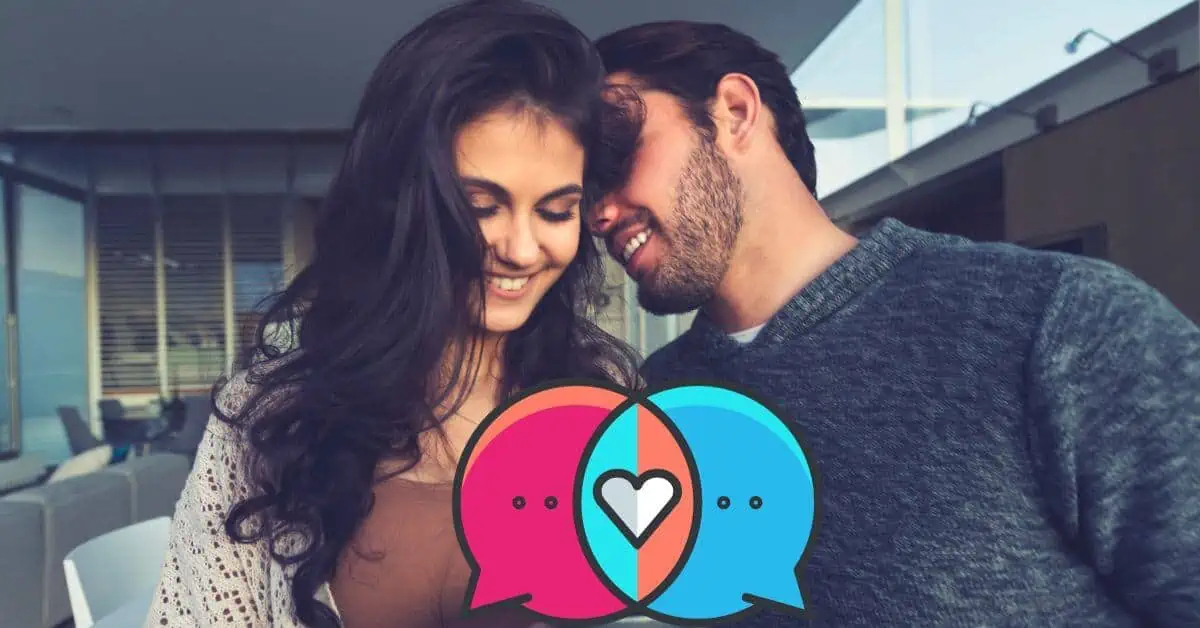I have no idea when someone is flirting with me—never have, never will. While I do know when someone is being a sex pest, creepy, pervy, or inappropriate in any way, the tricky art of recognizing flirting is absolutely lost on me.
Unless you blurt out “I like you” or something to that effect, I will ignore it because I’m genuinely unaware of what you are doing. It needs to be verbalized and clear, or I’m not taking the bait.
Is it a lack of self-esteem issue that stems from a feeling of inadequacy and insecurity that no one would find me interesting or attractive enough to flirt with? Possibly! Or is it a self-defense mechanism? It could be that too! Or, and this isn’t meant to be offensive, am I on the spectrum when it comes to picking up flirting cues? That makes sense as well. Maybe it’s a fun combo of all three!
Whatever the reason, I know I’m not alone—a lot of people have trouble picking up on flirting. So, together, we are going to attempt to learn all about the surprisingly tricky art of recognizing flirting!

What is Flirting?
This may seem dumb, but first, we need to define what flirting is. Here is the definition of flirting in the Cambridge Dictionary:
Flirt – to behave as if you are interested in someone, in a not serious way:
Ex. – They were flirting with each other at the party.
Even the official definition is super vague and not at all helpful!
Now that we haven’t exactly explained what it is, we do know that flirting can be both exciting and a bit confusing. It’s great when it goes right, feeling like a scene from a romantic comedy and leaving you absolutely buzzing. However, it’s often hard to tell when someone is flirting, as the signals aren’t always exactly clear. Flirting is a nuanced and subtle language, and it takes some practice to see it when it’s happening.
Research from the University of Kansas found that only a few people, ranging in age from 18 to 48, could correctly identify flirting. The study showed that just 18% of women could tell when men were flirting with them, and only 36% of men recognized when women were flirting.
Since flirting isn’t a behavior that everyone understands in the same way, what might work for one person might not for someone else.
Associate professor of communication studies Jeffrey Hall, who also penned “The Five Flirting Styles,” conducted the above study to clock how often two strangers accurately identified when the other was flirting.
“If you think someone is not interested in you, you are probably right; they are not interested,” Hall said. “But if someone is, you probably missed it.
“Behavior that is flirtatious is hard to see, and there are several reasons for that,” Hall added. “People aren’t going to do it in obvious ways because they don’t want to be embarrassed, flirting looks a lot like being friendly, and we are not accustomed to having our flirting validated so we can get better at seeing it.”
That makes more sense! But there are some other concrete reasons why it’s hard to recognize, and they include the following in the sections below.

You Don’t Know Them Well
Without an established relationship as a point of reference, it’s harder to notice any shift towards flirtatious behavior.
Think about everyday scenarios: perhaps someone you regularly see at the gym, a barista who takes an extra interest in your daily life and gives you an extra shot of espresso for free, or a stranger you see every day on the train commuting to work. These scenarios often leave you wondering, “Was there a romantic interest, or am I just overthinking it?”
In these super vague situations, we frequently end up not doing anything about it, even if we want to, because we doubt our interpretation of the interaction. Without clear, direct indications of interest in dating from either side, it’s difficult to accurately interpret subtle social cues, especially on the spot.

Maybe They’re Just Really Friendly!
Many people are just naturally really friendly, which, let’s be honest, can be mistaken for flirting. The line between friendliness and flirting often becomes blurry and even confusing because super-friendly people tend to be warm and great conversationalists, traits that can look a lot like flirtation!
Friendly people remember the little things about you, smile when you’re around, and dole out compliments–simply friendly gestures that oftentimes are misinterpreted as flirting.
This mix-up between friendliness and flirting is so common that it’s a frequent, almost overdone trope in movies and TV shows.
When trying to suss out if someone is flirting or just being nice, the context and setting of the interaction play a big role. Service industry workers, for example, are encouraged to be warm and welcoming as part of their job–they are literally paid to do it–with the goal of attracting repeat business. You have to consider the context, body language, and the person’s overall intentions before drawing any conclusions about them being flirty!

It’s an Ego Thing
Some people flirt just for the thrill of it or to feel good about themselves, aka an ego boost, with no real interest in starting a romantic relationship. This kind of behavior isn’t limited to single people; even those in committed relationships can engage in what’s known as harmless flirting.
Flirting can be a way to boost confidence or enjoy playful interactions, but it doesn’t always mean there’s an interest in more serious pursuits. Those who often engage in this type of flirting might be in unsatisfying relationships, recently out of a relationship, or seeking validation for other reasons.
The advent of dating apps and social media has completely overhauled old-school flirting, making it easier to engage in. Adding to the confusion, a LendEDU study found that nearly 44.44% of millennials use dating apps for “confidence-boosting procrastination.”
These platforms offer an easy way to engage in flirting with zero commitment, potentially wasting the other person’s time. So, if you’re puzzled about why someone you met on a dating app always seems too busy or doesn’t follow up on a date, they might just be looking for a quick ego pick-me-up—at your expense.

The Rejection Scaries
A major obstacle in flirting is the fear of being rejected. A study by eharmony and Relate revealed that 60% of men consider fear of rejection a significant insecurity while dating.
Rejection can indeed be painful, particularly when making a romantic move. Many people avoid situations where they could be rejected because it can lead to feelings of insecurity, shame, or embarrassment.
Just one negative experience with romantic rejection can discourage someone from taking future risks in love—the daunting nature of flirting can lead some to conceal their true feelings or send mixed signals.
Concerns about rejection, uncertainty, or past negative experiences are all valid reasons that make someone reluctant to show their interest clearly. This often results in really vague flirting, making it nearly impossible to gauge their real intentions.
Those who are afraid of rejection might engage in vague flirting as a way to cautiously see if you are interested. Like the old classic, when someone compliments you or asks you out, they might later joke about it or downplay their seriousness based on your response.
Takeaways
Well, we now know why flirting is so hard to recognize, but that doesn’t make it any less frustrating! Maybe some kind soul will write a complete dummy’s guide to flirting and tell us all how to know when it’s happening to you.
One thing we know with absolute certainty is that the person writing a definitive guide to flirting will not be me.
